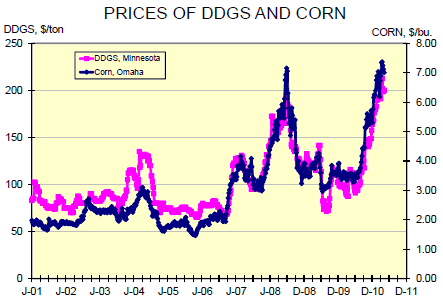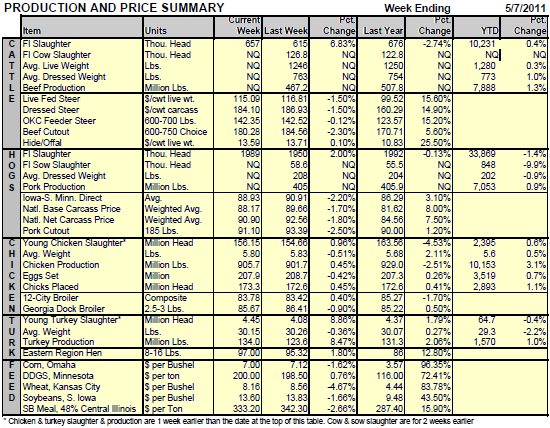



CME: Clear Concerns About Tight Corn Supplies
US - USDA has made progress on the cattle, hog and sheep slaughter, slaughter weight and production data situation but has not completely gotten the problem solved yet, write Steve Meyer and Len Steiner.The good news, though, is that is appears the situation will be solved and the data series will be update by the end of this week. Here is the situation at present:
- Report SJ-LS710, Estimated Daily Livestock Slaughter under Federal Inspection, was again published as normal this week. Recall that this is the report based on Agricultural Marketing Service (AMS) calls to packers. It is thus not impacted by the disruption in data flow from Food Safety and Inspection Service (FSIS) personnel. It was also published per its normal schedule last week.
- Report SJ-LS711, Actual Slaughter Under Federal Inspection, for the week of 16 April was published on Friday. That means the currently-available data is still a week behind but it is at least not two weeks behind.
- Report SJ-LS712, Estimated Weekly Meat Production Under Federal Inspection, for the week of 30 April — not last week as would be their normal schedule. The delay in getting this report out is the reason our Production and Price Data table contains no cattle and hog weights or production data for last week.
- Report SJ-LS713, Cow Slaughter Under Federal Inspection by Region and US Total, for the week of 16 April was also published on Friday. As with the 711 report, these data are also still a week behind their normal schedule.
A source at USDA tells us that an additional week of data for the 711, 712 and 713 reports should be published early this week and that AMS plans to be back on a normal schedule by Thursday and Friday.
We appreciate the efforts by everyone at USDA to get these data back on track! We truly believe that one reason for the international competitiveness of US agriculture in general and our livestock and poultry industries in particular is the breadth and timeliness of the data available here. Most of it comes from USDA and let no one think we do not appreciate their work. We’re spoiled by its quality and we all suffer when it fails to live up to its usual level of dependability. More later on some issues regarding USDA data and the current budget discussions in Washington. We may have to make some tough choices on data and it is important to make the right ones!
Anyone who believes the recent selloff in CME Group corn futures is helping current profitability of livestock and poultry feeders needs to think again. They call them “futures” contracts for a reason. While changes in traders’ bets on those “future” prices have resulted in old crop corn futures falling nearly $1.00 per bushel since the first week of April, cash corn prices have not fallen by nearly as much.
As can be seen below, the benchmark Omaha cash corn price peaked at a record-high weekly average price of $7.37/bushel the week of April 12. But it has dropped only $0.37/bushel since that time, reaching the real “bargain” price of $7.00/bushel last week. Not exactly a blue light special!

While futures markets play a very important role in allocating acres for new-crop 2010 corn, the cash market has the immediate responsibility of making sure existing corn supplies get us to new crop corn in late summer and early fall. The cash market remains clearly concerned that corn supplies this summer will be very tight. Part of that concern was based on the slow early pace of corn planting and that portion may well decrease significantly this coming week if clear weather conditions continue. We expect Monday’s planting progress report to show substantial progress this past week. In fact, the planting numbers for the past week may be astounding given our abilities to cover acres and good weather in most key areas!
And what about distillers grains, the “abundant” by-product of ethanol production? Assuming 17 lbs. of DDGS per bushel of corn (more later), last year’s DDGS output was the equivalent of 1.38 billion bushels of corn. But that came from 4.56 billion bushels of corn; not a good trade in feed volume terms. We have recently seen anecdotal evidence that the DDGS yield is, on average, closer to 15 pounds/bushel, a reduction of 11.8 per cent in total DDGS output. An though there may be a lot of DDGS around, it is still priced based on the price of corn! Minnesota DDGS prices reached $212.50/ton the week of 4/12 — the same week the Omaha corn price hit its record.












